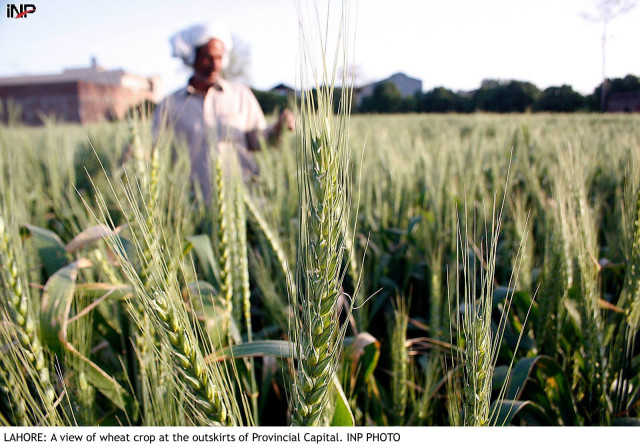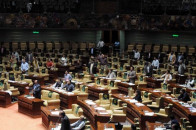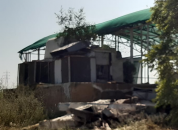Improving infrastructure: ‘Apply automated gauges to improve irrigation facilities’
The new system will constantly record and archive the water levels in channels.

The new system will constantly record and archive the water levels in channels. PHOTO: INP/FILE
In most parts of Sindh, the areas at the tail end of the irrigation network seldom receive adequate supply of water. One factor causing this problem is the inadequate gauges that fail to provide a proper reading.
At a seminar organised by the Sindh Irrigation and Drainage Authority on Thursday, researchers from the International Water Management Institute (IWMI) discussed how automation can help address the situation.
“For over 200 years, we have been using the manual tail gauging method to quantify water in a particular channel,” IMWI’s principal researcher Dr Arif Anwar. “Water loss and theft, disputes over sharing among farmers and improper gauging are all associated with it.” He added that advancements in technology had enabled researchers to digitally monitor and archive the whole process.
Anwar described the technology, which he has already applied in 17 distributaries of Hakra branch in southern Punjab, as ‘smart canals’. An ultrasonic sensor along with a power supply system, battery, SIM and an antenna is installed over the head of a distributary. The system measures the discharge of water in these channels and transmits data through the internet to a website for record-keeping and archiving. Anwar said the farmers’ organisations (FOs), which are established over each distributary for monitoring, abyana collection and irrigation works, can operate this technology after installation.
“We often hear farmers complain about shortage, unfair distribution, theft and leakages. This technology will enable irrigation authorities to ascertain where any of these things are happening.”
As of now, the researchers have only equipped 17 distributaries of Hakra branch with this system. In the second phase, the devices will be installed at other watercourses.
According to Anwar, the technology can also be used to ensure proper collection of abyana and to plug leakages. It could even save the billions of rupees lost in collection due to the alleged corruption by the irrigation staff.
In Sindh, the irrigation authorities charge Rs177 for water supply to an acre of sugarcane field, Rs142 for orchards, banana and onion, Rs 93 for cotton, Rs89 for rice, Rs77 for watermelon, Rs71 for chillies, Rs67 for pulses and Rs54 for wheat. The cess is collected on seasonal basis, once or twice a year.
On the other hand, Isra University’s chancellor, Dr Asadullah Qazi, voiced his concerns regarding the success of the technology in Pakistan. “Although it is true that water management and abyana collection are serious problems, I have witnessed several similar technologies fail in different parts of Pakistan.”
The IWMI’s Syed Azeem Shah said that the technology, though widely applied in developed countries, is expensive and, therefore, not affordable for the FOs. The FOs collected the water tax and kept 40 percent of it, he claimed, adding that the government will have to give financial support to farmers community to upgrade the system.
Published in The Express Tribune, May 30th, 2014.



















COMMENTS
Comments are moderated and generally will be posted if they are on-topic and not abusive.
For more information, please see our Comments FAQ